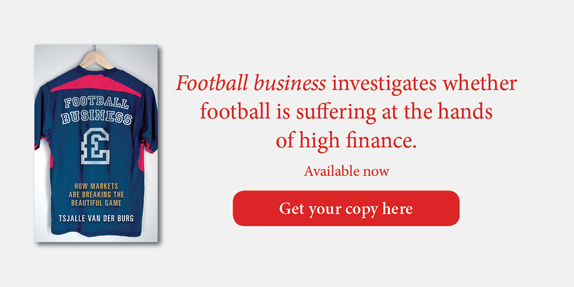The rising price of football
15 October 2014 by Catherine Holdsworth in Business and finance, Football Business
If you’ve grown up in the UK then you’ll know the passion that we have for our home teams. Football has become the unofficial national sport of this country and fans flock in their thousands to each game, cheering on their teams come rain or shine.
This afternoon, Dan Walker and Sarah Brett will discuss the rising price of football on BBC 5 Live. It will be interesting to see what they make of the rise in costs and whether they believe they are spread fairly. Despite the recent recession the costs associated with supporting a football team continue to rise. Many people across Britain are now having to pay high sums to attend games. This, however, is not the end of the cost. Think about away games, travelling to different stadiums, buying the new season’s strip, and a pie at half time. All these expenses add up; football starts to look like that cute puppy you adopted but who turned out to be a Great Dane, eating you out of house and home.
Economist Tsjalle van der Burg points out that even if fans decide to stay at home and avoid the ridiculous cost of a season ticket, they still have to pay high prices to watch the matches on TV. So where does all this money go?
In Van der Burg’s book, Football business: how markets are breaking the beautiful game, he highlights the effect that money has had on the sport.
What would have happened if Manchester United, the English champions of 2013, had played Burnley, the champions of 1960? The answer is clear: the Mancunians would have beaten the Clarets 158–1. That is, if the score had been expressed in terms of money. The Clarets made £136,000 in 1960 (or, to be precise, in the season ending that year). In that year £1 bought you seventeen times as much as it would in 2013. So £136,000 in 1960 was worth as much as £2.3 million in 2013. However, Manchester United earned £363 million that year, in other words 158 times as much.
The other English clubs were earning less than United in 2013. However, the average Premier League club received, after correcting for inflation, about fifty-three times as much as the average club in the English top division of 1960. Not a bad score. Elsewhere in Europe, professional football has also seen remarkable growth.
It all seems to be a great success. But is it? The revenues of car manufacturers have also exploded since 1960. Consumers spend much more on cars than they used to and they get a lot in return: a wide choice of cars is produced and the cars are of superior quality. One could assume that the same thing is going on in football, when in fact, the quality of the basic product – football matches – have not improved over the years.
There is more and more money in football, and this has changed the character of the game. Everything has become more business oriented. Supporters have to pay more to watch matches. The distance between clubs and their supporters has grown. Some clubs are owned by entrepreneurs in search of profits. And these trends seem set to continue into the future. Some see the money in the game today as a curse. They yearn for the past when ‘everything was better’.

